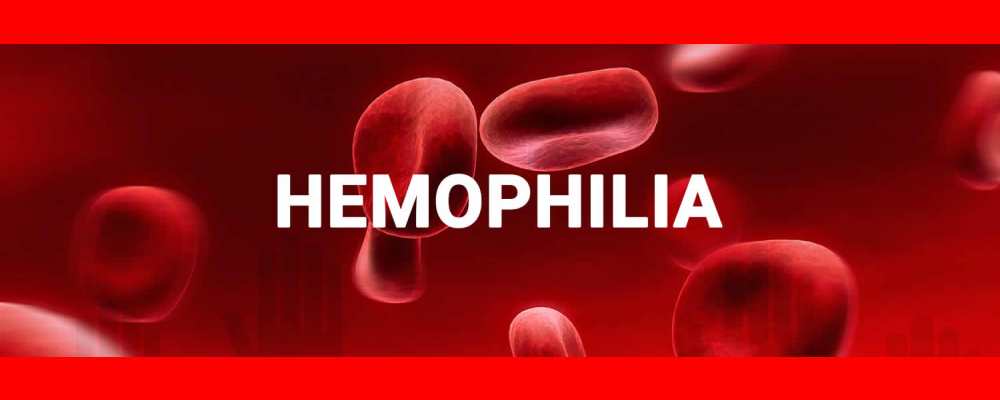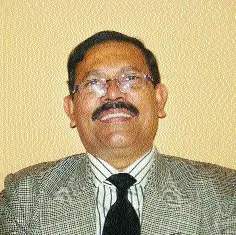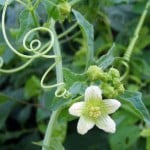Homeopathic Medicine survived despite the challenges thrown at it in the two centuries of its existence. The salvo of today is from the scientific world, which is unrelenting and vows to snatch the carpet underneath the feet of our art and science and banish it from the planet.
Science has the habit of making new heroes, but there are some who stand the test of time. To uphold the ethos of the eternal hero of Homeopathy you need a man who treads with a firm stead and sound moorings. The research study on Haemophilia with homeopathic medicine has brought one such to the fore in the form of Dr.Tapas Kundu. ‘Cometh the hour,Cometh the man’.
If there is one set of diseases that are disconcerting to any Physician, it has to be the hereditary and genetic diseases which at best can be managed but are difficult tocure. Haemophilia is one such disease inherited genetically and modern medicine is at its wits end to find a way to keep the patient from bleeding. Let us look at the salient aspect of this disease and what this genial homeopath’s work on this malady has brought to Homeopathy.Haemophilia, as we all know is an inherited blood disorder due to a defective coagulation mechanism as there is a deficiency of a couple of clotting factors.
Mechanism of coagulation:
Coagulation is a complex process where the blood clots to see that there is no loss from the site of the injury. A fibrin mesh is formed as the platelets rush in to seal the block. As soon as the endothelium is damaged, platelets rush to the site of the injury. Simultaneously the proteins in the blood plasma are set into a chemical reaction and fibrin strands form. Fibrinogen is the essential factor which converts into fibrin when the situation demands it. But initially it is the clotting factors that are primary in this set of chemical reaction. If there is a deficiency of Factor VIII it leads to Haemophilia A and the lack of Factor IX leads to Haemophilia B.
What causes Haemophilia?
The genes for the formation of the clotting factors is in the X-chromosome. If the X-chromosome is defective in a man, the factor necessary for clotting does not form in the blood leading to Haemophilia. But in a woman with a defective X-chromosome, the other normal chromosome rises to rescue and takes care of the formation of the clotting factors. But a woman with the defective X-chromosome is the carrier and 50% of their progeny if boys; are likely to develop haemophilia.
Symptoms of Haemophilia:
Depending on the amount of the clotting factors available in the blood of the affected patient, the degree and symptoms of Haemophilia vary.
Mild Haemophilia: If the clotting factor is above 5% it leads to mild haemophilia and the symptoms usually show up when there is a dental procedure or a surgery. According to few cultures, circumcision is done in infants and that is the earliest when Haemophilia could show up as the bleeding doesn’t seem to cease.
Moderate Haemophilia: If the clotting factor is from 1-5%, then it leads to moderate haemophilia. In such patients they tend to bruise easily and can develop internal bleeding symptoms after a blow or a fall. There could be bleeding inside a joint, which could lead to an irritation and pain. If left untreated there could be stiffness of the joint with severe pain. Tenderness, swelling and heat locally of the affected joint can be experienced. Itusually affects the weight bearing joints like the ankles and knees and sometimes the elbows.
Severe Haemophilia: If the clotting factor is less than 1% of the necessary amount it leads to severe haemophilia. These patients tend to bleed for no obvious reason. The Little’s area of the nose and the gums are the initial spots of bleeding. Bruises are more common which can be large and deep and in numerous places over the body. Pain in the joints with swelling and tightness is common. Haematuria, occult bleeding and unexplained bleeding from the gums and nose become the order of the day. Such patients best always be observed as the probability of developing intracranial haemorrhage is very high. A bad headache, disturbance of vision, loss of balance, speech slurring and loss of coordination need to be looked out for.
Dr.Tapas Kumar Kundu
Management of Haemophilia:
Decades ago, patients would be infused with fresh whole blood. As the factor deficiencies were studied and diagnosed, the plasma would be frozen and was infused as and when necessary. As of now, recombinant and synthetic factors with mammalian plasma are being infused.
RICE (Rest, Ice, Compression, Elevation) remain the main stay of treatment.
The main challenge of recombinant factors being infused has come in the form of inhibitors. These are nothing but the antibodies that the body produces against the new antigen. These prevent the infused Factor VIII and IX from working properly, making them resistant to medication.
Now that we have an idea about Haemophilia let us look at the work that has been executed by Dr.Tapas Kundu and his team.
The first research paper was successfully published in 2011, which reads:
Homoeopathic Medicines substantially reduced the need for clotting factor concentrates in haemophilia patients; results of a blinded, placebo controlled cross over trial.
This was a single blind placebo trial in 28 persons with severe (24) and moderately severe (4) patients of haemophilia. This study was conducted over a period of two years. During the firstyear, patients were given placebo and during the second year, acute medication was prescribed as and when the need arose, and also a deeper constitutional remedy was simultaneously administered. If the patient did not respond in the first six hours of medication, they were given factor concentrates.
During the first year there were a total of 203 bleeding episodes in 28 patients. This had come down to a phenomenal 28 bleeding episodes in the second year of observation with homeopathic remedies. The pain score and behavioural scores improved significantly and so did the need for analgesics. No patient developed inhibitors!
Arnica, Ledum pal, Mag phos and Hypericum were most useful for pain while Arnica Hamamelis and Millefolium were of use in acute bleeding. Calc flour was of great help with haemophilic synovitis. Millefolium proved its worth in the acute phase. Causticum, Calcarea carb, Heparsulph and Lachesis were the deep acting remedies that suited 16/28 patients.
The second research publication was in 2015 in the Journal of Traditional Medicine & Clinical Naturopathy which reads:
Management of Acute Bleeding in Severe Haemophilia using Homoeopathic Medicines: a Multicentric Case Series
The analysis of this paper was done from 2007 till 2014 involving 494 patients with ages between 9-51 years. Of 578 bleeding episodes, a staggering 91%of them responded successfully with homeopathic medicines, while 3.1% did not and factor substitutes had to be given. Patients who had inhibitors also responded 65% of the time. Pain was relieved in 83% of the cases.
The 636 bleeding episodes in the seven years of study included, epistaxis, bleeding from the gums, haematuria and miscellaneous bleeding. Hamamelis Q was found effective for open bleeding and was applied over the area for about 15-20 minutes. Arnica 30, Ledum pal 30 or Rhus tox 30 were the frequently used medicines apart from Merc sol, Calc carb, Sepia, Sulphur, Silicea, Veratrum alb, Tuberculinum, Medorrhinum, Lachesis, Lycopodium, Phosphorus, Pulsatilla etc. as and when the symptoms corresponded. These were given every half an hour and when there was no response in a four hour period, factor precipitates were resorted to, to achieve haemostasis.
It was found that most of the cases responded with stoppage of bleeding within half an hour and pain was relieved within a two hour period.
Standard biochemical, haematological, grouping, cross matching and coagulation work up was done as per the clinical requirement and situation. Dr.Kanjaksha Ghosh(Director, National Institute of Haematology), Surgeon-Dr.Sudhir Kulkarni and Dr.Ranjana Kulkarni clinically evaluated the effects of homeopathic medicine single-blinded, and provided factor concentrates whenever possible. Apart from Dr.Tapas Kundu, Dr.Afroz Shaikh, Dr.Priyanka Singh andDr.Afiya Shaikh were the prescribing homeopathic physicians.
The third research study was published in Journal of Evidence-Based Complementary & Alternative Medicine in 2017 and is available as reprint in sagepub.com. The title of the paper is:
An Exploratory Study of Autonomic Function Investigations in Haemophiliacs on Homeopathy Medications Using Impedance Plethysmography
A medical analyzer system helps in finding the heart rate variability (HRV) and blood flow variability (BFV). It has been found that the autonomic nervous system has an impact on homoeostasis. This is measured by the medical analyzer system produced by the Bhabha Atomic Research Centre. It has been proven that HRV and BFV arefound more often in haemophiliacs than in the normal population.
A total of 80 subjects were studied amongst which were 18 healthy controls and 62 were severe haemophiliacs where Factor VIII was less than one percent. Heart rate and peripheral blood flow were recorded over one hour in all the subjects.
Amongst the 62 haemophiliacs, 49 were on individualized homoeopathic medicines and 13 were not on individualized medicines. Amongst the 49 haemophiliacs, 34 were feeling better symptomatically while 12 were not better. Three patients were not recorded due to technical limitations.
It was found that there was a decrease in parasympathetic activity in haemophiliac patients taking homoeopathic medicines, which suggests that the BFV is impacted by reducing vagal input to the heart, allowing the sympathetic system to respond to stress and haemostasis.
The fourth research study was published in Complementary Medicine Research in May 2018, titled:
Homoeopathic Medicine Reduces Pain and Haemarthrosis in Moderate and Severe Haemophilia: A Multicentric study
This study was done over a period between 2007 and March 2014 with 1679 episodes of haemarthrosis in 343 patients with haemophilia. This study included the knee joints, shoulder joints, elbows, ankles and the wrists. This also included patients who had already developed inhibitors but still responded to homeopathic medication.
In 23 patients, 99 episodes could not be managed with homeopathic medicines and required factor concentrate infusion. But a staggering 1550 plus episodes of pain in the joints due to haemarthrosis responded to homeopathic medication. The progression of improvement was seen in six hours. It was studied as reduction in the joint swelling, reduction of joint girth and relief of pain.
If the improvement did not occur in 24 hours they were told to resort to factor concentrates. The following remedies were prescribed on symptom similarity in lower trituritions. Arsenic alb, Belladonna, Apismellifica, Calc carb, Calc flour, Bryonia, Rhus tox, Sepia, Sulphur, Silicea, Veratrum album, Tuberculinum, Medorrhinum, Thuja, Sticta, Stellaria media, Ledum pal, Lachesis, Lycopodium, Phosphorus and Pulsatilla. If the change did not happen in two hours of starting the medicines, they were re-assessed and changed, which accounted for 497 episodes of the total 2173 occasions.
This study was helpful as homeopathic remedies have been able to arrest bleeding apart from providing significant pain relief, and they reduced the long-term tendency of frequent joint bleeds in a significant number of patients.
As always, observation was done by seasoned allopathic doctors who were unaware of the nature of the homoeopathic medicines given.
The fifth research publication was published in European Journal of Biomedical and Pharmaceutical Sciences in April 2018, titled:
Effective Management of Haemophilia patients with a combined therapy to reduce cost: A New Approach
This study measured the work done by the centres of Dr.Tapas Kundu and was accepted for publication. This showed that the periodic medical camps at different cities treating haemophilia patients with homoeopathic remedies have met with remarkable success in reducing the clotting times and gaps between hospital visits for transfusion concentrates, causing improvement in general health, a feeling of well-being and considerably bringing down the cost of overall management of haemophilia. All of this brings a ray of hope to the poor patients.
Takeaways for Homeopathy with this research studies:
- The cost of haemophilic concentrates is very high, and in a developing country like India where more patients are below the middle-class income group, it is very difficult for them to afford treatment. The use of homeopathic remedies saved 90% of the costs. The world of medicine today stands by the principle that if there is a proven course of treatment and if it is not suggested by the physician, it is unethical practice. This also extends to research of new medicines. In the case of haemophilia, if the factor concentrates are not prescribed it could be termed unethical. But here the patients are unable to procure the factor concentrates because of the high price and thereby the ethical law cannot be enforced. For homeopathic research, here it is a blessing in disguise.
- The challenge of the scientific world is faced here successfully. These controlled and well-designed scientific experiments have suggested the possible biological action and molecular mechanisms behind the action of the remedies.
- This is an area where conventional medicine does not have much impact and research studies have clearly shown that homeopathic remedies have been successful in treating these patients 90% of the time.
- Haemostasis was achieved successfully in most patients 90% of the time. Sometimes it was observed that homeopathic treatment had greater capability in controlling bleeding than the conventional medicine has achieved.
- The gap between blood transfusion requirements increased significantly.
- Apart from the acute remedies Dr.Tapas Kundu and his associate prescribers always looked for a constitutional remedy, and on some occasions both simultaneously.
- Pain relief was achieved in less than two hours of medication in haemarthrosis and most of the relief was in less than 24 hours.
- The homeopathic remedies have been proved to have no, or insignificant side-effects and have considerable beneficial effects which have been demonstrated in all the studies.
- Apparently, no patient developed any inhibitors during homeopathic medication. Better still, the patients who had inhibitorsto the factor concentrates in their blood streams, also equally responded well to homeopathic medicines for improving coagulation and relieving pain.
- The same patient who was on placebo for a year and later on medication for the second year showed convincingly improved results and the cross-over trial is a benchmark in scientific studies.
- Most of the subjects selected were severe haemophiliacs where their factor concentrates were less than 1% and the improvement in them shows the remarkable response.
- All the subjects were studied by the experts, lead by the Director of the National Institute of Haematology and they were unaware of homeopathic remedies whether being placebo or otherwise.
- The clinical studies started as a work of a complementary mode of treatment but with 90% success rate it should be now considered an alternative medicine.
- Much has been said against homeopathy, that it is a ‘faith-cure’, ‘black magic’, etc. But when you have a double-blinded,or single-blinded trialas this study was,all such doubts are put to rest.
- A medical analyzer system which studies heart rate and blood flow variability influenced by the autonomic nervous system is an important factor to rule out any false-positive results.
- Last but not the least, homeopathic remedies afforded a better quality of life.





